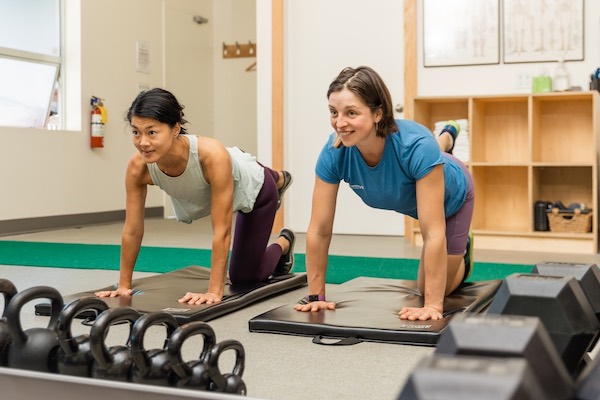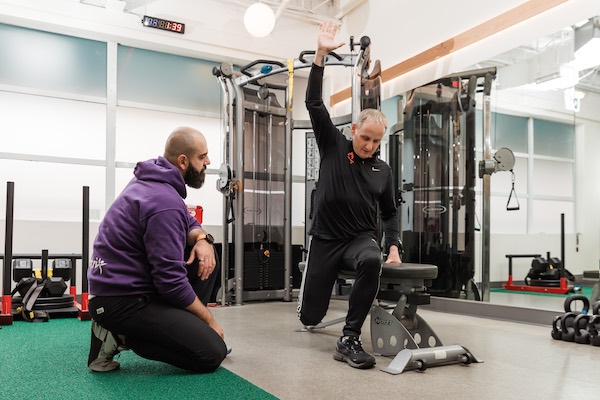Balance is often something we take for granted until it becomes a problem. We don't give much thought to the intricate mechanisms that keep us upright every day. But the truth is, maintaining balance is a complex interplay of muscles, sensory systems, and the brain. It's a skill that can be improved through targeted training administered by a kinesiologist focused on enhancing balance and stability.
In this blog, we'll delve into the science of balance training, exploring how it enhances stability and helps prevent falls. We'll discuss the importance of balance in everyday life, the factors that affect it, and how an exercise rehab program backed by the principles of kinesiology can help you stay steady on your feet.
Why Balance Matters
Balance is the ability to maintain the body's center of mass within its base of support. It's a fundamental skill that we rely on for everything from walking and standing to more complex movements like dancing and sports. Good balance is essential for maintaining independence and preventing injuries, especially as we age.
Poor balance can lead to a host of problems, the most serious being falls. According to the World Health Organization, falls are the second leading cause of accidental or unintentional injury deaths worldwide. They can result in fractures, injuries, and a decline in overall health and quality of life.
The Science Behind Balance
Balancing involves a complex coordination of multiple systems within our bodies:
- Vision: Our eyes provide visual cues about our surroundings and help us adjust our body's position accordingly.
- Vestibular System: Located in the inner ear, this system senses head movement and position, providing information about balance and spatial orientation.
- Proprioception: This is our body's internal sense of its position and movement. It relies on sensors in our muscles, tendons, and joints to send signals to the brain about body position.
- Muscles and Joints: Our muscles, particularly the core and lower limb muscles, play a crucial role in maintaining balance. They respond to signals from the sensory systems and make the necessary adjustments to keep us upright. Strength in these muscles is essential for stability.
- Brain: The brain integrates information from all these systems and sends signals to the muscles to make adjustments as needed.
As we age, these systems can deteriorate, leading to a decline in balance. Fortunately, balance training can help counteract these effects and improve stability.
The Role of Strength in Balance

Strength is a fundamental component of balance. Strong muscles, especially those in the legs and core, provide the stability needed to maintain an upright posture. When these muscles are weak, it becomes more challenging to control your body's position and react to balance disturbances effectively.
A kinesiologist can program appropriate strength training exercises, such as squats, lunges, and planks to help build and maintain the necessary muscle strength for good balance. As you strengthen these muscles, you'll find it easier to stay steady on your feet and recover from balance disruptions.
Balance Training Exercises
Balance training is a proactive approach to enhancing stability and preventing falls. Incorporating these exercises into your routine can help strengthen the muscles involved in balance and improve your overall coordination:
- Single-Leg Stance: Stand on one leg for as long as you can, gradually increasing the duration over time. This exercise challenges your proprioception and strengthens leg muscles.
- Yoga: Yoga poses and flows challenge balance and stability while promoting flexibility and strength.
- Balance Board: Using a balance board or wobble board can help train your balance by creating an unstable surface for you to stand on.
- Functional Exercises: Incorporate balance challenges into your daily activities. For example, try standing on one leg while brushing your teeth or closing your eyes while standing in the shower (with caution, of course).

- Aquatic Exercise: the water is a very safe environment for fall prevention. Doing challenging exercises in the water can help strengthen muscles and coordination of the lower body while in an environment where falls are non-consequential.
The Benefits of Balance Training
Engaging in regular balance training offers a myriad of benefits:
- Fall Prevention: By improving your balance, you reduce the risk of falls and related injuries, especially in older adults.
- Enhanced Athletic Performance: Athletes can benefit from improved balance, which translates into better agility, coordination, and overall performance.
- Pain Reduction: Balance training can alleviate musculoskeletal pain and discomfort by improving posture and muscle strength.
- Functional Independence: Maintaining good balance ensures you can perform everyday activities with ease and confidence.
- Mental Well-Being: Balance training often incorporates mindfulness and relaxation techniques, promoting mental well-being and stress reduction.

Every person is different and will have different goals, weaknesses in their bodies and balance. Working with a kinesiologist that can assess your body's strength, balance, proprioception and functional abilities is the best approach to make sure your exercise program is tailored to you. Thus providing you with the best results to improve your balance and strength.
Conclusion:
In conclusion, the science of balance training is a fascinating field with profound implications for our daily lives. Whether you're young or old, an athlete or not, improving your balance is a worthwhile endeavor. It can help you stay safe, mobile, and active for years to come. So, why wait? Start incorporating balance exercises into your routine today and take that first step toward a more stable, healthier future. Contact a kinesiologist to assess your balance and strength to figure out which balance and strength exercises are right for you.




.jpg)



